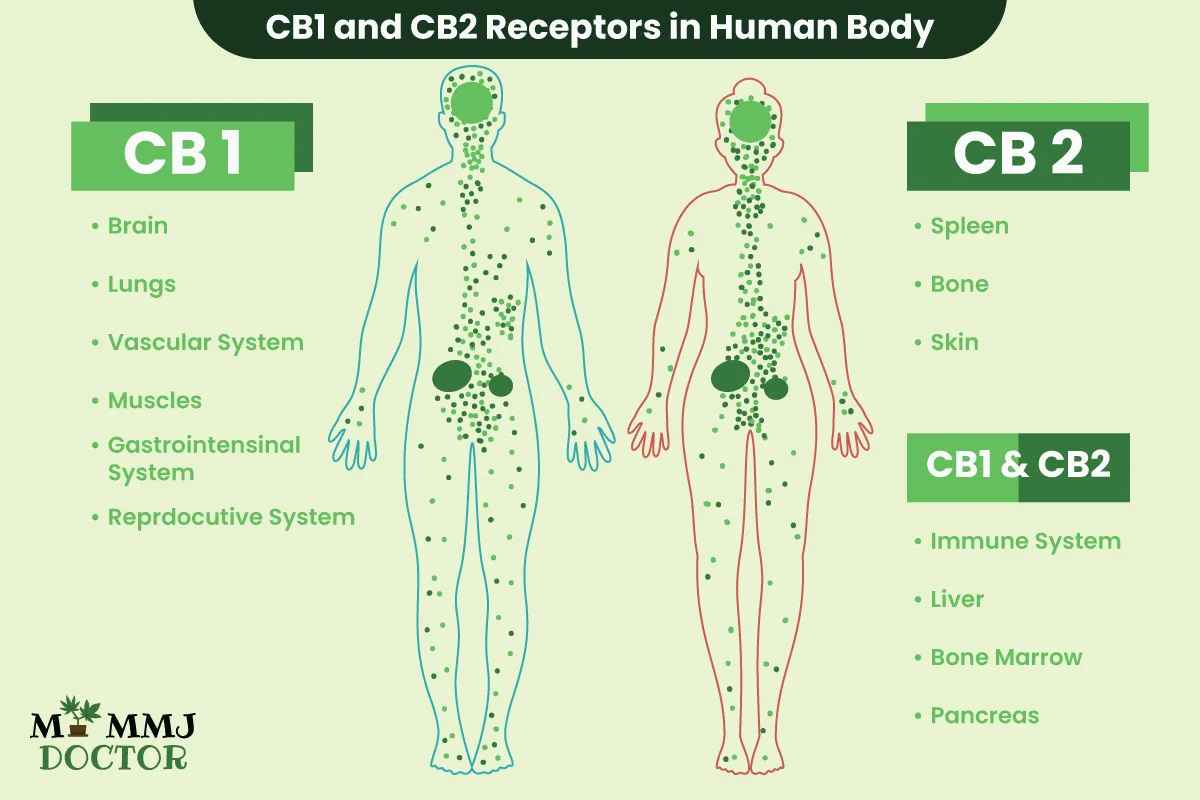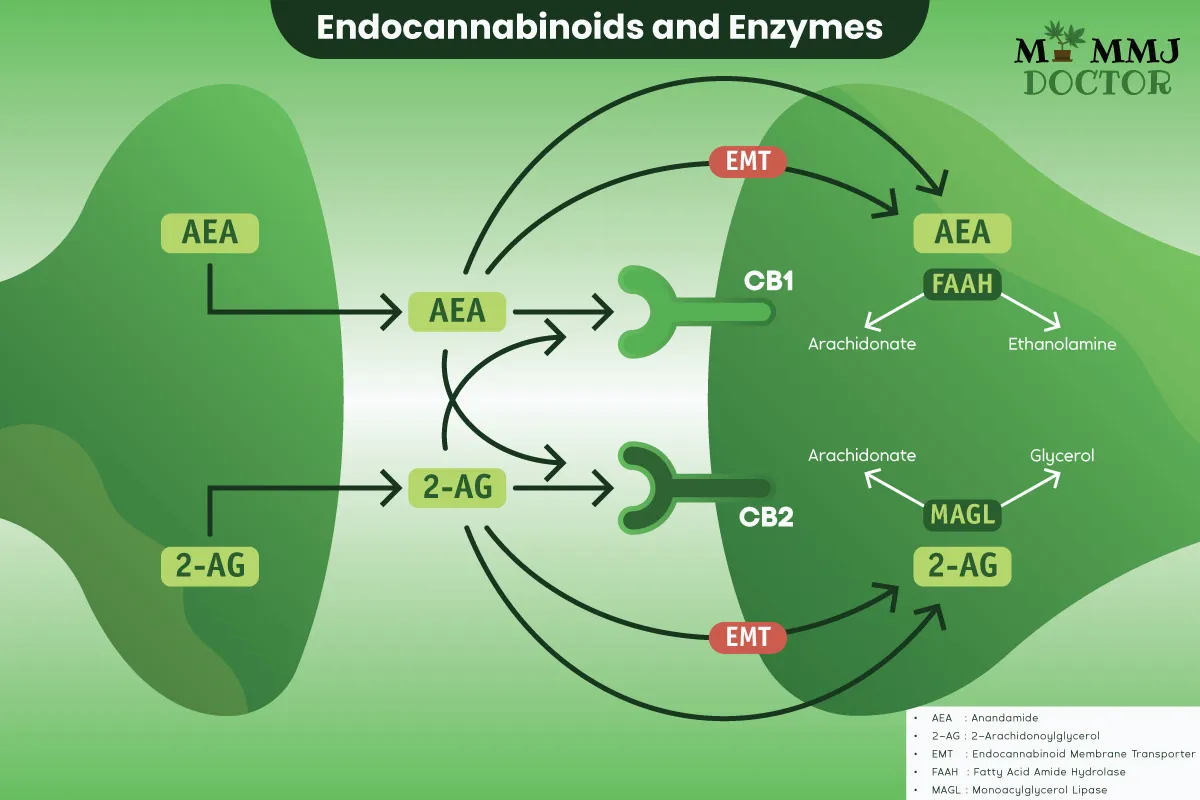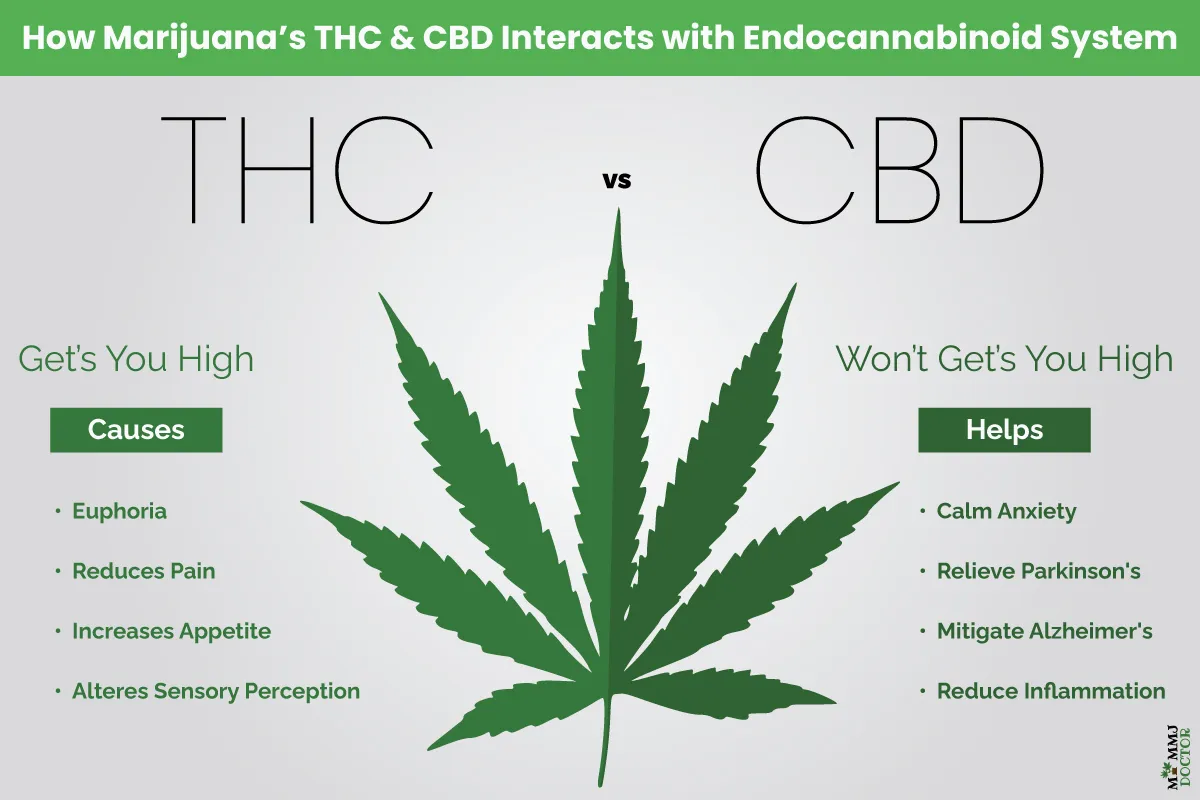The Science Behind Medical Marijuana: How It Works

Medical marijuana has become a topic of interest all over the United States due to its potential therapeutic benefits, and especially with the ongoing discussion of President Biden’s changing laws regarding cannabis, it has become more the talk of the town. As research reveals more medical uses, its acceptance and legalization are growing. In the United States, more states are legalizing marijuana for medical use, recognizing its value in treating conditions like chronic pain, epilepsy, multiple sclerosis, and cancer-related symptoms. This trend shows a broader acceptance of the health benefits cannabis can offer when used responsibly under medical supervision.
This article will explain how medical marijuana works, how it helps in pain relief, its capacity for inflammation reduction, and the treatment of neurological and mental health disorders.
What is Medical Marijuana?
By engaging with the system, medical cannabis helps reduce symptoms like nausea, chronic pain, muscle spasms, and many other medical conditions. This makes it a valuable and alternative option for people with conditions such as multiple sclerosis, cancer-related symptoms, and epilepsy as well.
As of 2023, many medical marijuana products are legal in 38 states, 3 territories, and the District of Columbia, but they remain illegal under federal law in the United States.
The Endocannabinoid System (ECS) of the Body
The Endocannabinoid System (ECS) is a complex cell-signaling network of our body that plays an important role in maintaining homeostasis in the body. This involves maintaining a wide range of physiological processes like maintaining mood as well as memory, regulating appetite, pain sensation, and immune response.
Here are the receptors and parts involved in the ECS.
They primarily consist of two types of receptors present in the Endocannabinoid system, CB1 and CB2.

- CB1 Receptors: These receptors are located in the brain and central nervous system, especially in the regions associated with cognitive functions and emotional regulation. They are mainly involved in functions like memory formation, mood stabilization, sleep regulation, and pain perception. THC interacts with the brain’s cognitive functions by stimulating CB-1 receptors, which can lead to feelings of euphoria and potentially reduce pain.
- CB2 Receptors: These receptors are mainly found on peripheral organs and immune cells. CB2 receptors are important as they help regulate the body’s immune response and manage inflammation. Thus, they help reduce inflammation and manage pain, especially in people with arthritis.
The cannabinoid system, including the CB1 and CB2 receptors, is crucial for regulating essential bodily functions. Once the CB1 and CB2 cycles are complete, cannabinoids initiate their therapeutic effects.
Endocannabinoid System: Endocannabinoids and Enzymes
Further involvement in the endocannabinoid system includes endocannabinoids and enzymes that facilitate its regulatory functions.

- Endocannabinoids: These are natural compounds like anandamide and 2-AG that bind to cannabinoid receptors.
- Anandamide (AEA): Also known as the “bliss molecule,” It plays an important role in boosting the mood, reducing anxiety, and regulating appetite. It binds primarily to CB1 receptors in the brain.
- 2-Arachidonoylglycerol (2-AG): This type of endocannabinoid helps regulate immunity and manage inflammation. It binds to both CB1 and CB2 receptors, with a more prominent role in immune cells and peripheral tissues.
- Enzymes: After carrying out their functions, specific types of enzymes break down endocannabinoids. This breakdown is important in order to prevent the accumulation of endocannabinoids and ensure that they work into action when needed.
- Fatty Acid Amide Hydrolase (FAAH): This enzyme breaks down anandamide.
- Monoacylglycerol Lipase (MAGL): This enzyme is responsible for breaking down 2-AG.
How does Medical Marijuana interact with the ECS?
THC and CBD, both found in medical marijuana, interact with the endocannabinoid system (ECS) in different ways:

THC:
- Action: Binds directly to CB1 receptors in the brain and central nervous system.
- How does it affect you? It causes psychoactive effects resulting in euphoria, reduced pain, increased appetite, and altered sensory perception.
CBD:
- Action: It does not bind directly to CB1 or CB2 receptors but helps influence them indirectly by promoting the production of endocannabinoids and preventing their breakdown.
- How does it affect you? Provides anti-inflammatory, anti-anxiety, and neuroprotective benefits without causing psychoactive effects.
THC directly activates ECS receptors leading to a “high,” while CBD indirectly enhances ECS functioning without psychoactivity.
What can medical cannabis be used for?
Cannabinoids, the active chemicals in medical marijuana, resemble chemicals produced by the body that play a role in appetite, memory, movement, and pain.
Current research indicates that these are the medicinal uses of cannabis:
- Can help in controlling vomiting in people who have undergone chemotherapy.
- Effectively helps in reducing pain in people who suffer from conditions like nerve damage, cancer, rheumatoid arthritis, and multiple sclerosis.
- Reduces muscle spasms in patients with multiple sclerosis. However, there is a little less evidence present that it might help patients with muscle spasms resulting from a spinal cord injury.
Additionally, some evidence suggests that medical marijuana might:
- Improve Insomnia for individuals with obstructive sleep apnea, fibromyalgia, chronic pain, or multiple sclerosis.
- Increase appetite and reduce weight loss in people with HIV and AIDS.
- Reduce tics in individuals with Tourette’s syndrome.
- Alleviate anxiety in people with social anxiety disorder.
- Improve symptoms of post-traumatic stress disorder.

However, more research is needed to confirm the effectiveness of medical marijuana for many other conditions. But medical marijuana has been found usable in cases of irritable bowel syndrome, Parkinson’s disease, and addiction to other substances as well.
How to use cannabis for medicinal purposes?
There are various ways to use marijuana, depending on the desired effect and the condition being treated. And how is marijuana can be consumed in different ways:-
- Smoking and Vaping: Smoking or Vaping medical marijuana causes cannabinoids to go directly into the bloodstream, which causes fast and rapid relief of the symptoms. However, this method is not for everyone because of its potential to cause respiratory irritation.
- Edibles: Edibles have long-lasting effects in comparison to vaping or smoking. When consumed, the CBD goes directly to the digestive system resulting in slower but prolonged relief. This makes cannabis-infused foods or edibles more effective.
- Tinctures and Oils: When placed under the tongue, tinctures and oils quickly absorb into the bloodstream through the sublingual glands. This method provides faster relief than edibles and allows for more precise dosing. They are available in various concentrations, allowing individuals to choose the dosage that best suits their needs.
- Topicals: Applied directly to the skin to relieve localized pain and inflammation.
Medical Marijuana Laws in the United States
Medical marijuana is legal in 13 states. It is also legal in all states where recreational use of weed is permitted. Here’s a simplified breakdown:

States with Legal Medical Marijuana and Decriminalized Use
In these states, marijuana is allowed for medical use and decriminalized for other uses. Decriminalization means possessing small amounts of marijuana won’t lead to criminal prosecution but may result in civil fines or drug treatment.
- Hawaii
- Louisiana
- Mississippi
- New Hampshire
- North Dakota
States with Legal Medical Marijuana Only
In these states, marijuana is allowed for medical use but not decriminalized for other uses. People can still face prosecution for possessing non-medical marijuana.
Restricted Use States:
Some states allow only CBD or low-THC products for specific medical conditions. These states include:-
Obtaining a Medical Marijuana Card:
To legally purchase medical marijuana, individuals typically need a medical marijuana card (MMJ card), which requires a doctor’s recommendation, proof of residency, and registration with the state’s medical marijuana program. Requirements may vary by state.

How to Get a Medical Marijuana Card from My MMJ Doctor
Obtaining a medical marijuana card through My MMJ Doctor is a straightforward process:
- Sign-up and Schedule Your Appointment:
Begin by summarizing your medical condition and entering your basic details into a form. Some states may require your state ID. Finally, submit the appointment form. - Connect with a Professional via Video Conference:
You’ll meet with a doctor via video conference. After receiving your appointment confirmation via email, the doctor will contact you at the scheduled time. Discuss your health concerns with a doctor to learn how medical marijuana could help, and obtain a recommendation letter. This letter is required for state registration, meeting specific requirements set by the DEA, including proof of residency. - Receive Approval for Your Medical Marijuana Card:
Each state has its own rules for approving medical marijuana cards. Depending on where you live, you might receive your recommendation letter immediately or after a few days.
Current Research and Future Directions
Ongoing research is exploring the effects of cannabinoids on various conditions. Innovations in delivery methods and changes in legal regulations are also expected to enhance accessibility and efficacy. As many are considering the rescheduling of medical marijuana, this could potentially make it a great choice for future medical use.
Conclusion
Medical Marijuana offers promising therapeutic health benefits and it works by interacting with the endocannabinoid system. This way it helps in regulating functions like mood, appetite, and pain. This is what makes medical marijuana so effective in treating conditions like epilepsy, multiple sclerosis, and symptoms related to cancer as well. As research continues to uncover its mechanisms and benefits, understanding how cannabinoids influence the body offers insights into its scientific basis for medical use.
“
Our Simple 3 Step Process For Medical Marijuana Card
1. Fill up your details in an easy 420 Evaluations form.
2. Get Evaluated by a Local MMJ doctor After Online Submission.
3. Get Approved and Receive your Recommendation In Your Email.
Looking To Apply For A Medical Marijuana Card?
Related Articles
How to Get a Medical Marijuana Card in Maryland?
How Can You Obtain Your Medical Marijuana Card in Maryland in 2025?Are you a Maryland resident seeking a way to manage your symptoms naturally? You came to the right place. Maryland has a medical marijuana program that allows eligible...
Benefits You Are Missing Without a Michigan MMJ Card
Top Benefits of a Michigan Medical Marijuana CardIf you live in Michigan and already use cannabis, you likely know it’s easy to access. However, many people don’t realize that having a Michigan medical marijuana (MMJ) card offers additional...
What are the Michigan Medical Marijuana Laws?
What are the Michigan Medical Marijuana Laws?Medical marijuana has been legal in Michigan since 2008, helping thousands of residents manage chronic pain, anxiety, cancer symptoms, and more. But knowing what’s allowed - and what’s not - can...





0 Comments